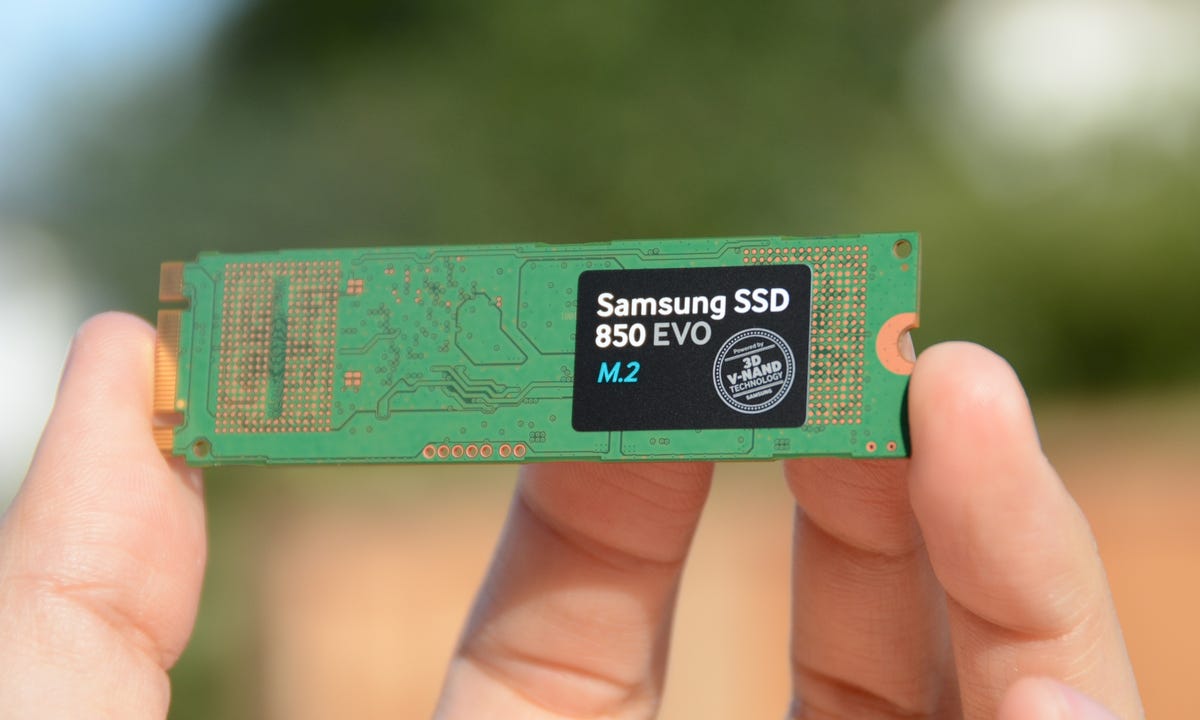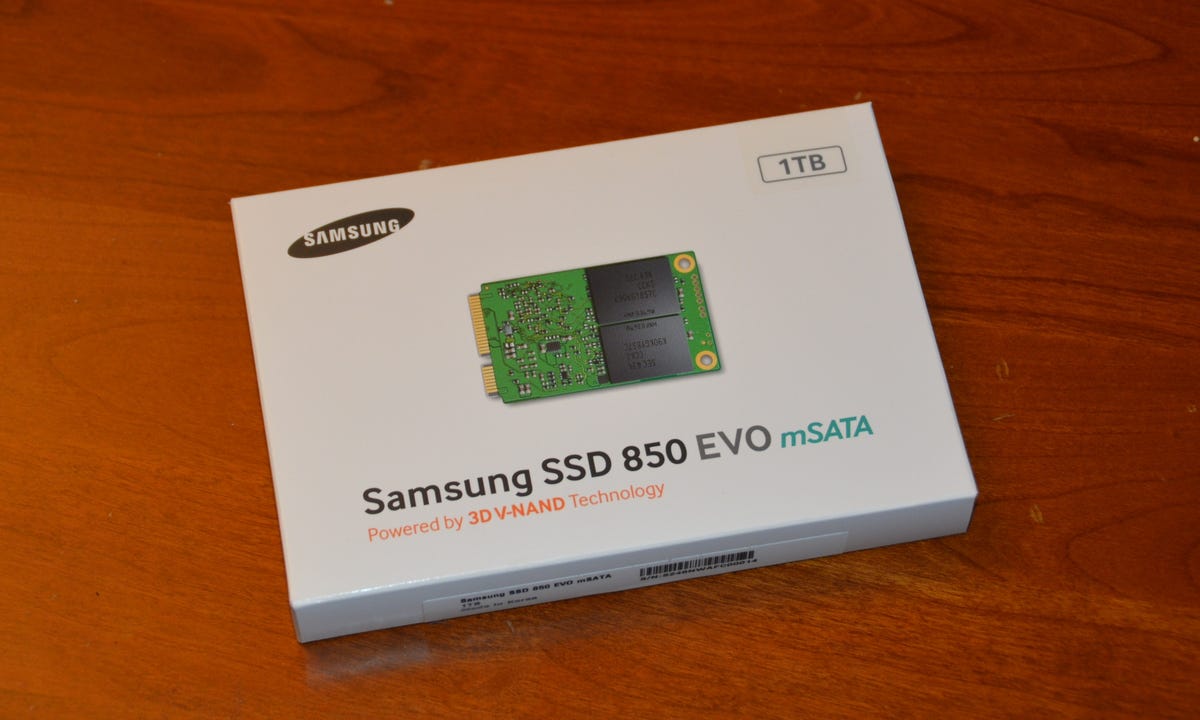
Dong Ngo/CNET
If you’ve been pining for the performance and features of the Samsung SSD 850 Evo drive inside your ultrabook, here’s some good news: Samsung today announced smaller mSATA and M.2 versions of its popular 2.5-inch solid-state drive.
The M.2 drive is designed to fit high-end ultraportable laptops. The drive uses a PCI-e connection to connect to the host to enhance performance. The mSATA drive is even smaller but still uses the SATA connection standard. It supports SATA 3 (6Gbps).
Note that since both mSATA and the upcoming M.2 designs are not as popular as the 2.5-inch standard design, you will need to check with your laptop’s manufacturer to find out which one your machine supports before making your purchase.
While the mSATA drive was announced today, it’s actually already on the market in the external form of the Samsung Portable SSD T1 that came out in January.
Despite the differences in physical designs, the mSATA and M.2 drives share almost the same performance and features as the SSD 850 Evo. These include 3D vertical NAND flash memory, TurboWrite technology, Rapid mode, high endurance, encryption and energy efficiency.


Dong Ngo/CNET
First introduced with the SSD 850 Pro, Samsung’s 3D vertical flash memory is a new and more efficient way for memory cells — the storage units on an SSD — to be organized. Traditionally, 2D planar type NAND flash memory cells lay flat on the surface of the silicon wafer. With Samsung 3D VNAND, the drive’s flash memory cells are stacked in up to 32 layers, allowing for significantly more cells in the same number of wafer bits. This greatly increases the density and means, among other things, more storage space for less cost.
TurboWrite is a technology used to accelerate write speed during data transfer by creating a high-performance write buffer in an SSD. On top of that, Rapid mode (which can be turned on or off using Samsung’s Magician software) uses part of the computer’s system memory as writing cache to further improve the performance. Overall, you can expect similar, if not the same, performance in the M.2 and mSATA drives as that of the SSD 850 Evo.
Both the M.2 and mSATA drives are available in 120GB, 250GB and 500GB versions with suggested prices of $80, $130 and $230 respectively. The mSATA version is also available in 1TB that costs $450. (Pricing in the UK and Australia will be announced later, but those prices convert to roughly £55-£300 and AU$100-AU$575.)
For more on these drives’ performance, check out CNET’s full review of the Samsung SSD 850 Evo.


Now playing:
Watch this:
Samsung SSD 850 Evo solid-state drive is a keeper
2:46




